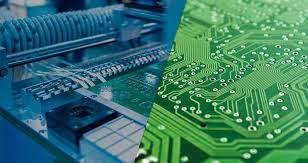Essential Overview of Tenting
Tenting is a process in printed circuit board manufacturing that primarily offers the intent of providing protection to vias, small holes on the PCB connecting various layers. There are a few ways to do this, the most common of which is processing vias with one side or both sides being complete cover by solder mask in order to prevent entering molecules such as solder, chemicals and other kind of pollutants. This makes tenting a powerful way to improve the reliability and durability of PCBs. This method is especially useful in high-density boards where the space available is rare, as un-coated vias can produce short-circuits or corrode.
Neutralizing Environmental Stressors
In the simplest terms, tenting vias are used to protect them from environmental hazards including moisture and dust as well as chemicals. Water and humidity are the most brutal forces against PCBs causing corrosion which can render a PCB useless. These vias are to be sealed at the factory by applying a layer of solder mask over them, which waterproofs that portion so it would no longer allow moisture to penetrate into the inner layers of our board. This can extend the PCB lifespan by several years in high humidity environments.
Improved Electrical Performance
In summary, tenting is an essential step in improving the electrical performance of PCBs. Among other things, it shields the vias, thus preserving signal paths on the PCB. Vias left open can act as parasitic path for signal leakage, especially at high frequency applications. This leakage causes the performance of RF chips and high-speed processor to degrade. Signal integrity has been noted to be even better, where on boards with tented via manufacturers have noticed 30% less interference.
Reduction in Short Circuiting and Mechanical Damage
When boards with exposed vias are used in assembly, especially when automated equipment is employed, the open-mounted vias may make accidental deposition of solder more readily able to cause short circuits on these devices. Tenting keeps solder from bridging adjacent vias, which results in costly shorted circuits that are hard to troubleshoot and repair. What is more, due to the protective solder mask overlayer tented vias are less prone to be mechanically damaged during handling and assembly (scratches or nicks).

Price and Tailored Solutions
While tenting is not as expensive and also offers other benefits for PCB protection. It uses the same solder mask material as elsewhere on the board and adds almost no extra cost. Adding tenting to a PCB production run usually increases the cost by less than 5%, which is a small price to pay for improving reliability and performance. Additionally, the process can be tailored to the application requirements; for example, applying selective tenting only to vias that are most prone or vital to the circuit operation.
Interconnected durability with Innovators Purse inproduction processes
As a result, manufacturers tent vias now as part of their more advanced manufacturing processes to help PCBs last longer and function better. In particular, in affordable automobile electronics needs full encapsulation like conformal coating and therefore only requires tenting. This is an additional protective layer that can drastically lower the rates of equipment failure for vehicles exposed to road conditions and weather.
Final Thoughts
Tenting plays a critical role in the protection of PCBs. It serves a double shield which is used to protect the board from different environmental threats as well it can improve its electrical performance and reduce potential mechanical and electric damage during both production and usage. It powers our industry shift to more reliable and higher performance electronic products. If you are in the industry of PCB design and manufacturing, knowledge and application of appropriate tenting practices play a significant role in maintenance of product quality & its life cycle.